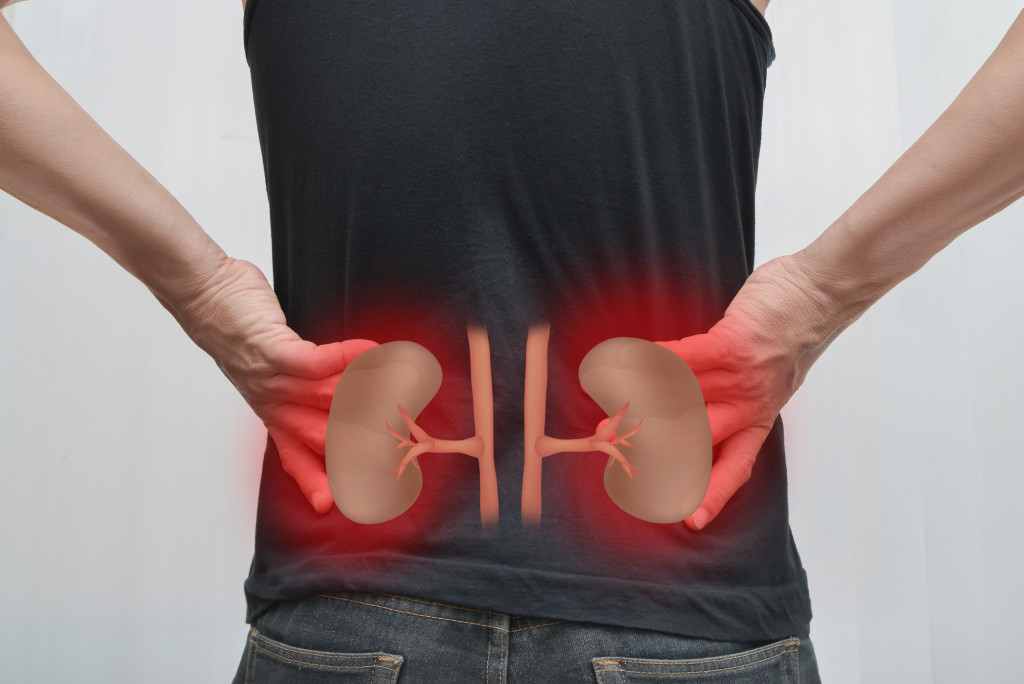- Urinary incontinence affects up to 50% of adults and is caused by weakened bladder or pelvic muscles.
- There are different types of urinary incontinence, including stress and overflow incontinence.
- Risk factors include age, gender, certain health conditions, and medications.
- Treatments include catheters, bladder training, medications, and absorbent products.
- Urinary incontinence can be effectively managed with proper diagnosis, treatment, and care.
Urinary incontinence can be very embarrassing and can limit your daily activities. However, it is more common than you think, especially in older adults and women. The condition occurs when you unexpectedly experience urine leakage from a weakened bladder or pelvic floor muscles. This can cause anxiety and shame and makes people feel isolated. Fortunately, urinary incontinence is manageable with proper diagnosis, treatment, and care.
What is Urinary Incontinence?
If you’re experiencing urinary incontinence, you may feel it’s a taboo topic that few people are willing to discuss. But it shouldn’t be — urinary incontinence is surprisingly common and affects up to 50% of adults at some point in their lives.
Urinary incontinence occurs when your bladder muscles become too weak to contain your urine, resulting in unintentional leakage. It is not a disease but a symptom of another medical condition or injury.
Types of Urinary Incontinence
There are various types of urinary incontinence depending on the condition’s cause. One of the common types is stress incontinence – which happens when pressure on the bladder is exerted during physical exercises, coughing, or sneezing. Overflow incontinence is another type – it occurs when the bladder does not empty properly, causing a buildup of urine that overflows the bladder.

Symptoms
Symptoms of urinary incontinence are pretty straightforward. Patients usually experience unexpected urine leakage when there is pressure on the bladder, frequent urge to urinate, or the inability to delay urination. Additionally, patients may suffer from nighttime incontinence, bedwetting, or skin irritation from urine contact. If you experience any of these symptoms, it’s essential to consult a healthcare professional.
Risk Factors
There are common risk factors for this particular disorder. Here are some of them:
Age
One of the most significant risk factors for urinary incontinence is age. Your pelvic muscles and bladder weaken as you age, making you more prone to incontinence. Research shows that women are most affected by this condition after menopause. However, it is not just older adults who are at risk. Younger adults of both sexes can also suffer from this condition.
Gender
Gender is another vital risk factor for urinary incontinence. Women are more susceptible to this condition, mainly due to the anatomical differences between men and women. Women have shorter urethras than men, and their bladder and pelvic floor muscles experience more strain when carrying out pregnancy, childbearing, and aging. These factors can make women more vulnerable to urinary incontinence.
Health Conditions
Certain health conditions can increase the risk of urinary incontinence. For example, respiratory issues such as chronic coughing and obesity can exacerbate this condition. In addition, neurological diseases and conditions that affect the spinal cord and brain can also increase the risk of urinary incontinence. The most common neurological disorders that can lead to incontinence are multiple sclerosis, Parkinson’s disease, and spinal cord injuries.

Medications
Several medications can increase the risk of urinary incontinence. Diuretics, blood pressure medications, muscle relaxants, and sedatives can all exacerbate this condition. If you are experiencing urinary incontinence, it is crucial to speak with your healthcare provider, who may prescribe alternative medications less likely to increase the risk of this condition.
Dealing With Urinary Incontinence
Although it can be embarrassing and difficult to manage, urinary incontinence is treatable. Here’s how to deal with it:
Catheter
Those with moderate or severe incontinence may benefit from using a catheter. This medical device is inserted in the bladder to allow it to empty and prevent urine leakage. Furthermore, you can purchase catheter supplies online. This is much more convenient than going to the doctor whenever you need supplies. They can also be far cheaper.
Bladder Training
Bladder training is a physical therapy that helps strengthen your bladder and pelvic muscles. This treatment can help reduce the urge to urinate and prevent leakage. Bladder training usually consists of timed trips to the bathroom, relaxation exercises, and increasing fluid intake.
Medications
Your doctor may prescribe certain medications that can help reduce the symptoms of urinary incontinence, such as anticholinergics and tricyclic antidepressants. However, it is essential to follow all instructions your healthcare provider gives when taking these medications.
Absorbent Products
Absorbent products are a great way to manage the condition for those with minor or occasional incontinence. These products come in pads and briefs that absorb urine to prevent leakage. They also help maintain your hygiene and provide extra protection against skin irritation caused by contact with urine.
Urinary incontinence is a common condition and can be managed with proper diagnosis, treatment, and care. If you are experiencing any symptoms of urinary incontinence, it is essential to consult your healthcare provider for further evaluation. You can manage your symptoms effectively with the proper medical care and lifestyle changes.